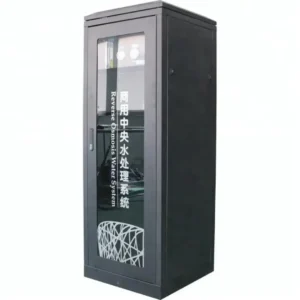In – Depth Analysis of the Purification Principle of Water Purifiers: Understand It All in One Article
The purification process of water purifiers may seem complex, but a detailed analysis reveals the fascinating science behind it.
Water purification typically starts with the pre – filter stage. Made of materials like PP cotton or nylon mesh, the pre – filter acts

as a physical barrier, trapping large particles such as sand, rust, and sediment. This initial step not only protects the more delicate
inner components of the purifier but also reduces the load on subsequent filters.

as a physical barrier, trapping large particles such as sand, rust, and sediment. This initial step not only protects the more delicate
inner components of the purifier but also reduces the load on subsequent filters.
Next comes the activated carbon filter, a key player in improving water quality. Activated carbon has an extensive porous structure,
providing a large surface area for adsorption. Chemicals like chlorine, which can affect the taste and smell of water, along with organic
providing a large surface area for adsorption. Chemicals like chlorine, which can affect the taste and smell of water, along with organic
pollutants, are attracted to the surface of the carbon and trapped within its pores. This process significantly enhances the taste and odor of the water.
For the most harmful and minute contaminants, membrane filtration technologies are employed. Ultra – filtration membranes

have pores sized precisely to block bacteria and large – molecular – weight organic matter, allowing only water molecules and small
ions to pass through. Reverse osmosis membranes, with their extremely small pores, can reject viruses, dissolved salts, and heavy
Water Purifier Factory, Water Purifier For Home, Water Purifier Machine,Water Purifier, Water Filter Purifier System

have pores sized precisely to block bacteria and large – molecular – weight organic matter, allowing only water molecules and small
ions to pass through. Reverse osmosis membranes, with their extremely small pores, can reject viruses, dissolved salts, and heavy
Water Purifier Factory, Water Purifier For Home, Water Purifier Machine,Water Purifier, Water Filter Purifier System
metals, achieving a high level of purification. By understanding these principles, you can make more informed decisions when choosing
a water purifier and appreciate the science that ensures clean drinking water.
In – Depth Analysis of the Purification Principle of Water Purifiers: Understand It All in One Article

